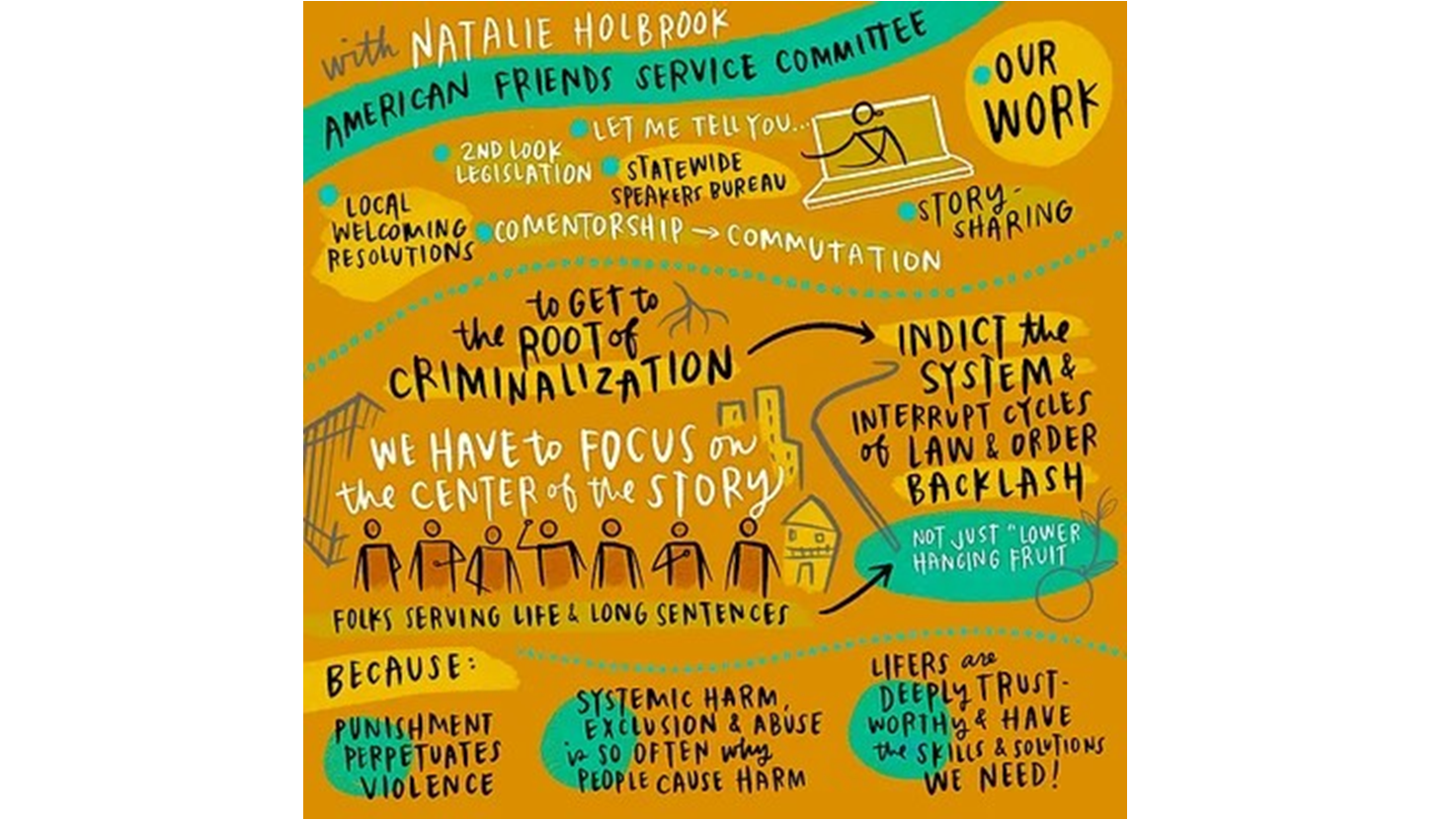
On January 25, 2024, Natalie Holbrook-Combs, director of the AFSC Michigan Criminal Justice Program, joined a panel of experts to provide statewide criminal legal updates. The Michigan Collaborative to End Mass Incarceration (MI-CEMI) organized the event. Natalie shared these updates on Second Look legislation.
Michigan’s problems
Natalie said many people in Michigan’s prisons are serving old sentences that are not representative of current sensibilities about length of punishment. People in prison are growing older, and the cost of medical care for elderly continues to rise.
Outside of the governor’s office, there’s no current mechanism for re-examining people’s sentences. Michigan is an outlier among the states in terms of extreme sentencing, as this graph shows:

The Sentencing Project
Note that 38% of people who have served 10 years or more were 25 years of age or younger at the time of their crime. (Source: The Sentencing Project)
An overview of Second Look Legislation (SLL)
According to Natalie, SLL creates a resentencing route for anyone who has served at least 10 years of their original sentence. The court would take a variety of evidence into consideration.
SLL envisions resentencing as a collaborative effort among the individual seeking resentencing, the judge, the prosecutor, and the victim's (or victims') family.
SLL does not guarantee resentencing or earlier release. It merely allows imprisoned people to apply to have their case reexamined.
Individuals who have served at least 10 years on their sentence would be eligible. This includes those with life sentences (with or without parole) or sentences greater than 10 years.
Important stats
Natalie said that these statistics show the context for SLL in Michigan:
Average age of population of those eligible for Second Look: 51.5 years old
Total spent on corrections in Michigan each year: $2.1 billion
Total spent on medical costs (mental and physical) for those incarcerated each year: $305.7 million.
Recidivism rate (defined as reconviction for any offense) among people who were sentenced as juveniles in Philadelphia to life without the possibility of parole and then subsequently released: 1.14%
One-third of women or non-binary people are serving 15 years or more. Almost all women in prison in Michigan have experienced sexual and/or physical trauma before prison.
A handful of Michigan’s 83 counties would have the most people eligible for Second Look. Over 3200 people from Wayne County, which includes Detroit, would be eligible. Oakland County (with 740 people) and Genesee County (with 488 people) follow.
For more information, please visit this Second Look resources page.